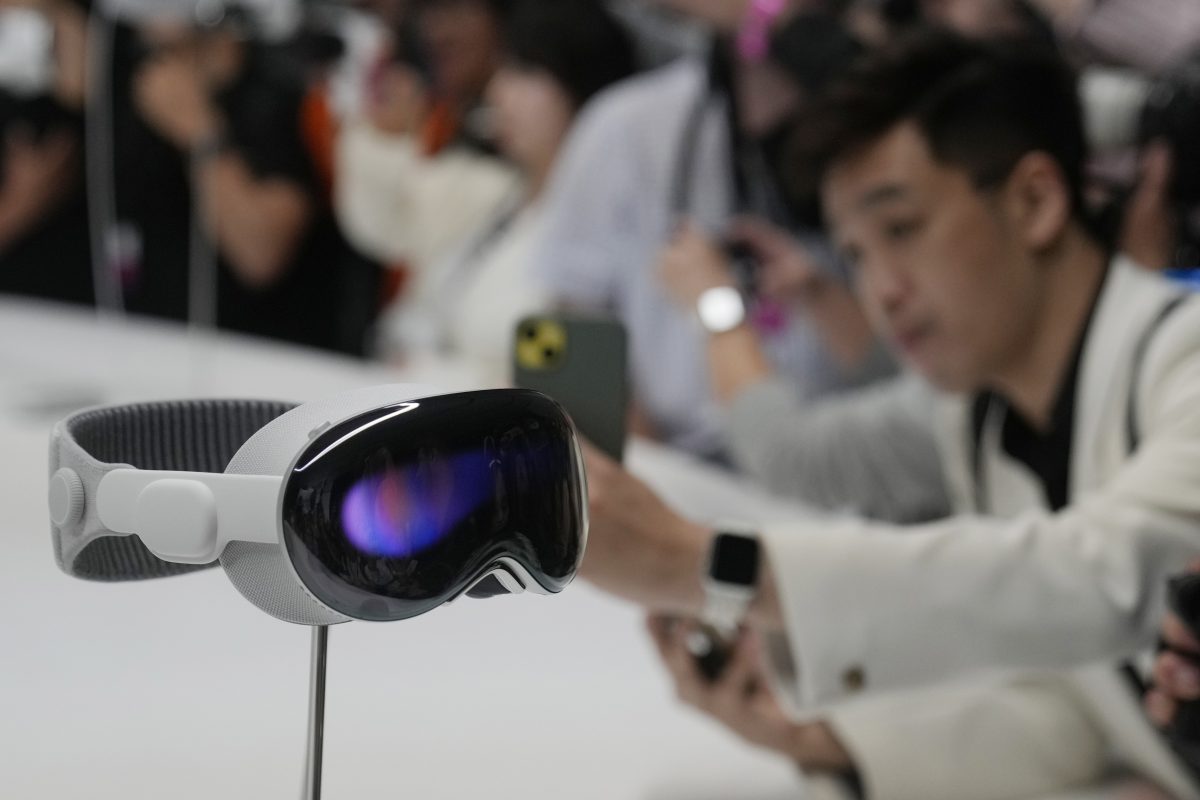Apple will need to convince developers to build apps for its headset
The effort of transplanting 2D iPhone and iPad apps to a 3D immersive display may be more hassle than it’s worth.

The “one more thing” Apple announced at its Worldwide Developers Conference (WWDC) this year was the industry’s worst-kept secret. The Apple Vision Pro, the tech giant’s gamble on mixed-reality headsets, has received a mixed welcome. The new device is a feat of engineering, but it also comes with an eye-popping $3,499 price tag.
But there’s another issue as well that could prove to be a problem: getting third party developers on board with making native apps.
Apple hopes the Vision Pro will fundamentally change how we interact with our devices—that once freed from the constraints of a smartphone or tablet screen, we’ll embrace “spatial computing,” as the glitzy promo video shows. Gesture and eye tracking identifies where your focus is, allowing you to interact with apps without pressing buttons or a screen.
That could be great for consumers. But it’s a headache for Apple’s ecosystem of app developers. Apple explained that existing apps designed for the iPad will work on visionOS, the operating system powering the Vision Pro, without any changes. But those iPad apps will be displayed within a metaphorical window, losing much of the functionality provided by mixed reality.
To fully take advantage of the technology and make the leap from the screen to the real world, these apps will need tweaking.
The announcement was a momentous one for René Schulte, head of 3D and quantum communities of practices at the Italian company Reply, which designs 3D environments as part of its business. But he’s worried that much of what was shown in the demo videos made limited use of the opportunities mixed reality should make possible.
“What I didn’t like was the focus on 2D content,” he says. Schulte has been working with Microsoft’s mixed-reality HoloLens glasses since 2015, and with the Oculus Rift. He thinks some chances to overhaul the user experience for the Vision Pro were missed.
In part that’s down to the challenges involved in redesigning apps for an entirely new interface. Reply published a white paper last year on how to take apps from two dimensions to three. In it, they admit that the change in mentality is not easy.
“Designers need to learn new methods and skills, and also get used to new tools,” says Schulte. “Designing for 3D is not simply mirroring 2D concepts into three-dimensional space.” Yet that’s just what he saw with—for instance—the presentation of Adobe Lightroom and Microsoft Office.
Denys Zhadanov is a board member and former vice president of Readdle, a Ukrainian development company that produces a suite of popular productivity apps for iOS. He’s enthusiastic about the promise of the Vision Pro, but he recognizes that it’ll require retooling Readdle’s apps.
“We do have in our apps a lot of custom elements, so we will have to customize that and spend some time adjusting to match all of the things to run smoothly on Vision Pro,” he says. Nevertheless, he sees the augmented-reality options made available by the Vision Pro as useful for his company’s apps. “I'll need more time to explore those ideas,” he says, “but I think the device itself is phenomenal.” The imminent release of a software development kit (SDK) for the Vision Pro will help, he adds. (Apple did not respond to a request to comment for this story.)
But even with that support, some developers are uncertain about how to proceed. “I think the cost will be a huge issue for consumer apps at this point,” says Dylan McKee, cofounder of Nebula Labs, a mobile app development company based in Newcastle, UK.
McKee, like others, will have to decide whether the time it will take to retool their apps for a new sort of display is worth the effort, given the potential audience for a product whose price is way out of reach for many. Analysts Wedbush Securities forecast that Apple will ship around 150,000 units of the Vision Pro in 2024. For comparison, the company shipped 55 million iPhones in the first three months of 2023.
Zhadanov believes Apple is positioning the first version of the Vision Pro as “a toy for the middle class and upwards.” That will dictate the potential use cases for Readdle’s apps on the Vision Pro, and the design choices they make.
Still, with the small shipment numbers forecast, McKee will be shying away from expending lots of effort on the Vision Pro. “From my personal perspective, only one or two of the apps we build make sense to port to it, really,” he says. One is an elite sports coaching app where players could benefit from real-time 3D analysis. The other is a medical training app.
“I think the virtual simulations of certain training scenarios could be invaluable,” says McKee. “But both of these are niche products compared to the consumer apps we produce.”
Keep Reading
Most Popular
Large language models can do jaw-dropping things. But nobody knows exactly why.
And that's a problem. Figuring it out is one of the biggest scientific puzzles of our time and a crucial step towards controlling more powerful future models.
How scientists traced a mysterious covid case back to six toilets
When wastewater surveillance turns into a hunt for a single infected individual, the ethics get tricky.
The problem with plug-in hybrids? Their drivers.
Plug-in hybrids are often sold as a transition to EVs, but new data from Europe shows we’re still underestimating the emissions they produce.
Google DeepMind’s new generative model makes Super Mario–like games from scratch
Genie learns how to control games by watching hours and hours of video. It could help train next-gen robots too.
Stay connected
Get the latest updates from
MIT Technology Review
Discover special offers, top stories, upcoming events, and more.